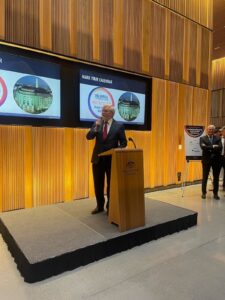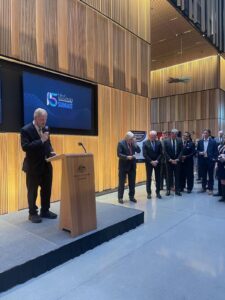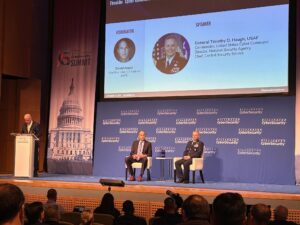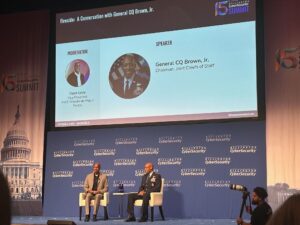Billington 2024: Key Cybersecurity Takeaways from the AI Age
SecurityScorecard had the pleasure of participating in the 15th Annual Billington CyberSecurity Conference – a key convening of policymakers and industry thought leaders in our Nation’s Capital.
This year’s edition – Advancing Cybersecurity in the AI Age – included over 4,000 registrants and 200 speakers participating in 40+ sessions and breakouts. It would not be an emerging tech and government conference without an extra emphasis on AI.
The SecurityScorecard team contributed to the global cyber community as attendees and guests of the Embassies of Australia, Canada, and the United Kingdom.
Government leaders used the convening to highlight important initiatives, including:
- The U.S. Government’s Technology Modernization Fund and the Office of Management and Budget’s investments to fully implement zero trust
- An upcoming cyber executive order that incorporates AI lessons learned, its cybersecurity benefits, and would build on the 2021 cyber executive order and the 2023 comprehensive AI executive order. Such a prospective order could highlight the value of AI in forensics, addressing threats, and jump-starting skills for generating secure code and patching existing code
- A new White House Office of the National Cyber Director roadmap to strengthen internet routing security, including Border Gateway Protocol, with specific actions for network operators and service providers
- Deeper examination of the use of advanced mathematical methods of analysis to prove that technology products are secure by design, furthering the objectives of a July 2024 joint memo on FY 2026 Cybersecurity Priorities
Here are five more cybersecurity takeaways:
Public-Private Partnerships: Officials continue to emphasize the critical role of public-private partnerships and the necessity of fundamental cyber requirements for positioning the U.S. for cybersecurity success. The discussion on the International Counter Ransomware Initiative highlights how important industry engagement is for strengthening public sector capacity and skills, hinting that more investments are to come. A senior panel of Federal CIOs and CISOs underscored the value of involving all partners and stakeholders early on to address potential issues before they arise.
AI and Cyber Defense: National security cyber leaders from the Intelligence Community and the U.S. Military spoke about proactive defense, its potential benefits in the cybersecurity realm, and how AI can help defenders at scale. While there is dual use of offense and defense with AI, defenders have had more challenges, and there are workforce skills gaps with 500,000 other open cyber roles. Panelists spoke about how information exchanges between the public and private sectors have been a bedrock for quicker cybersecurity solutions, including more secure code through better-trained models and could generate faster patching.
Malicious State Actors: The Governments of China, Russia, and North Korea continue to represent a significant threat to the U.S. cyber community. Panelists spoke about North Korea’s hacking for Bitcoin, as well as Russia and China’s sponsored attacks on critical infrastructure with an emphasis on water and healthcare systems. There has also been identification of zero days in the energy sector that China and Russia have been harvesting. There is a focus on ransomware deployment as a vehicle for cybercriminal activity. Experts spoke about the need for greater cyber reporting to give additional transparency for quicker threat detection and solutions.
Supply Chain and Cloud Security: Supply chain – with a specific emphasis on digital vulnerabilities – and cloud security are growing in complexity and need to be addressed beyond technical risk. Previously analog systems are now more digital and should have a baseline for minimum cybersecurity requirements. Proactive and continuous monitoring may help bolster defenses and find better ways to address insider threats and breaches. On supply chain matters, organizations are struggling to best assess partner assets and deficiencies, highlighting more interest in Software Bill of Materials (SBOM) as a necessity.
State and Local Critical Infrastructure Concerns: More must be done at the state, local, and tribal government levels on cybersecurity. With increasing pressures at the subnational level, CISA provided guidance to state, local, tribal, and territorial governments just prior to the Billington CyberSecurity Conference to help with interconnected critical infrastructure systems and strengthen zero-trust principles for network security.







Embassy of Australia photos courtesy of Sarah Nguyen.




